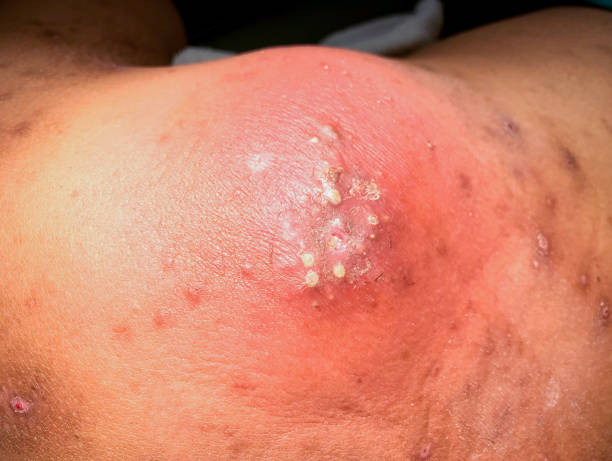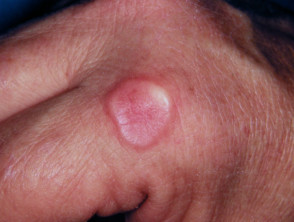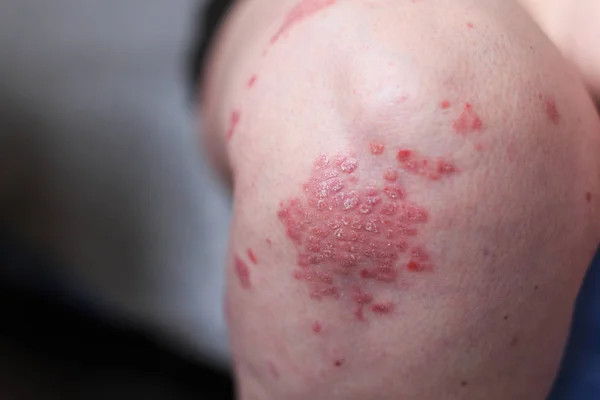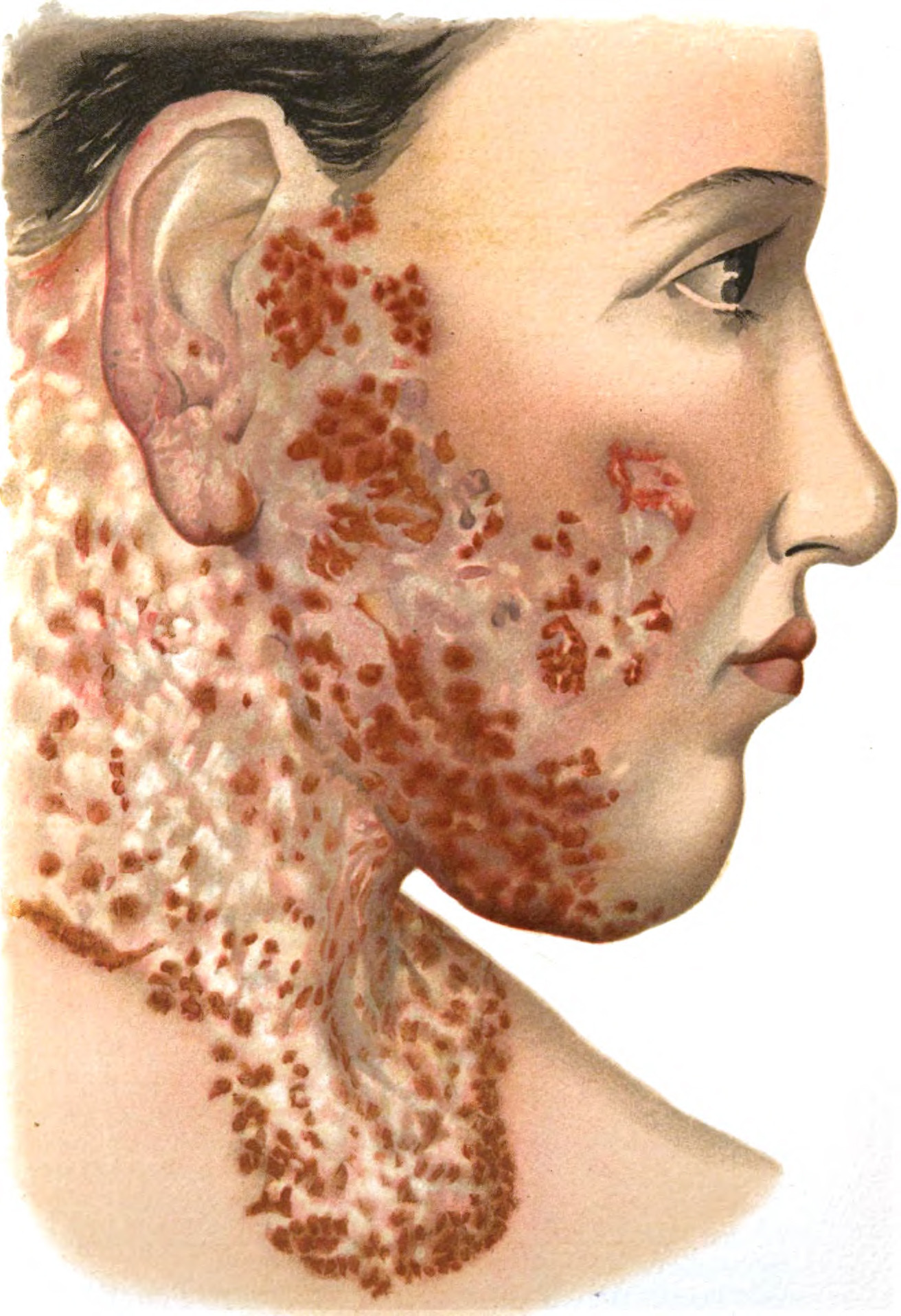Definisi
Karbunkel adalah infeksi kulit yang melibatkan sekelompok folikel rambut, kulit sekitarnya, serta jaringan di bawah kulit yang dalam. Karbunkel terbentuk dari kumpulan furunkel yang saling berhubungan di bawah permukaan kulit. Furunkel sendiri adalah infeksi pada folikel rambut yang ditandai dengan abses atau kumpukan nanah di bawah kulit.
Karbunkel paling sering timbul di area tubuh yang berambut, namun paling banyak ditemukan pada area dengan kulit yang tebal seperti seperti pada punggung, tengkuk leher, dan tungkai. Namun, karbunkel juga dapat timbul di area tubuh lain seperti bokong, paha, lipat paha, daerah sekitar kelamin, dan ketiak.
Karbunkel terlihat seperti benjolan yang bengkak, sering terdapat nanah di dalamnya, dan berwarna merah. Karbunkel paling banyak ditemukan pada orang dewasa dan jarang pada anak-anak. Pria lebih sering terkena karbunkel dibandingkan wanita.
Penyebab
Umumnya karbunkel disebabkan oleh infeksi bakteri Staphylococcus aureus yang mendiami permukaan kulit, tenggorokan, dan rongga hidung. Terkadang, bakteri Staphylococcus aureus penyebab infeksi bisa bersifat resisten atau tidak bisa diobati antibiotik metisilin, sehingga disebut sebagai bakteri MRSA. Bila penyebab karbunkel merupakan bakteri MRSA, maka terapi antibiotik yang dibutuhkan akan menjadi lebih spesifik. Pada kasus karbunkel yang sering kambuh dan melibatkan area sekitar kelamin dan anus, bakteri penyebab dapat berbeda.
Bakteri penyebab infeksi memasuki kulit melalui folikel rambut, luka gores kecil, bekas tusukan, dan luka kecil lainnya yang terkadang tidak terlihat. Infeksi bisa menyebar ke bagian tubuh lain bila penderita menggaruk luka dan tangannya menyentuh bagian tubuh lain. Bagian yang terinfeksi terisi oleh cairan, nanah, dan jaringan mati. Karbunkel yang sedang aktif dan meradang dapat menular dengan mudah sehingga anggota keluarga dapat terkena karbunkel pada waktu yang sama.
Faktor Risiko
Faktor-faktor yang dapat meningkatkan risiko terbentuknya karbunkel adalah:
- Usia tua
- Obesitas
- Kebersihan diri yang kurang
- Kesehatan yang buruk
- Adanya kondisi kulit yang merusak perlindungan kulit dan telah berlangsung lama (kronis)
- Diabetes
- Penyakit ginjal
- Penyakit hati, termasuk peminum alkohol (dapat menyebabkan kerusakan hati)
- Anemia (kurang sel darah merah di tubuh)
- Sistem kekebalan tubuh yang lemah, misalnya pada orang HIV/AIDS atau menerima pengobatan yang menekan sistem imun (kemoterapi kanker atau setelah menerima transplantasi organ)
Meskipun demikian, karbunkel tetap dapat menyerang orang berusia muda yang sehat, terutama pada orang yang tinggal bersama banyak orang misalnya di asrama, serta pada orang yang memakai barang pribadi untuk bersama (linen tempat tidur, handuk, dan pakaian). Selain itu, seseorang juga dapat terkena karbunkel karena iritasi dan gesekan pada permukaan kulit akibat pakaian yang ketat, mencukur rambut, atau gigitan serangga, terutama pada area tubuh yang banyak berkeringat.
Gejala
Karbunkel dapat dimulai dari folikulitis (peradangan folikel rambut), yang jika tidak tertangani dapat berkembang menjadi furunkel. Jika terdapat banyak furunkel yang saling berhubungan maka baru disebut karbunkel.
Karbunkel biasanya dimulai dari benjolan merah menyerupai jerawat yang membesar secara perlahan dan menjadi nyeri. Kumpulan bakteri, sel kulit mati, sel darah merah dan sel darah putih akan membentuk nanah di dalamnya. Pada atap karbunkel akan terdapat beberapa mata nanah berwarna putih kekuningan yang mengeluarkan cairan sedikit demi sedikit. Dalam beberapa hari kemudian, biasanya karbunkel akan pecah dan mengeluarkan cairan putih keruh atau merah muda (nanah). Namun, terkadang benjolan itu terbentuk jauh di dalam kulit sehingga tidak nanah tidak dapat mengalir keluar sendiri. Nanah harus keluar seluruhnya sehingga karbunkel dapat sembuh. Setelah nanah keluar akan terbentuk kerak seperti koreng di atasnya.
Karbunkel yang terletak lebih di atas dan memiliki bukaan pada permukaan kulit, lebih jarang meninggalkan bekas luka daripada karbunkel yang lebih dalam. Gejala lain karbunkel adalah demam, kelelahan, dan lemas. Pembengkakan pada jaringan sekitar dan kelenjar getah bening terutama pada leher, ketiak, dan lipat paha juga dapat ditemukan.
Diagnosa
Diagnosa karbunkel biasanya berdasarkan keluhan pasien serta pemeriksaan fisik yang dilakukan oleh dokter. Biasanya keluhan benjolan sudah muncul beberapa hari sampai beberapa minggu, terlihat mau pecah, dan semakin besar serta terasa nyeri. Dokter mungkin akan melakukan pemeriksaan laboratorium untuk menumbuhkan bakteria yang terdapat pada nanah karbunkel. Pemeriksaan ini digunakan untuk mengetahui jenis bakteri yang menginfeksi sehingga dapat menentukan antibiotik yang tepat.
Tata Laksana
Karbunkel membutuhkan terapi medis untuk mencegah atau menangani komplikasi, mempercepat penyembuhan, dan meminimalisir berkas luka. Dokter akan mengeluarkan nanah dari dalam karbunkel serta bekas luka menggunakan larutan steril. Prosedur pengeluaran nanah ini biasanya dilakukan dengan bius lokal. Setelah bersih, umumnya luka akan diisi dengan kain kasa khusus untuk mengalirkan sisa-sisa nanah yang masih ada, yang akan diangkat dalam 1-2 hari berikutnya.
Dokter juga akan memberikan antibiotik pada pasien. Antibiotik yang diberikan bisa berupa obat minum dan krim atau salep. Tergantung pada tingkat keparahan keluhan, umumnya karbunkel akan sembuh dalam 2-3 minggu setelah terapi medis. Obat antinyeri seperti parasetamol dan ibuprofen juga dapat diresepkan dokter untuk mengurangi keluhan nyeri yang dirasakan.
Oleh karena karbunkel dapat menular, maka penting untuk memperhatikan kebersihan diri. Hal yang dapat dilakukan di rumah untuk menangani karbunkel adalah:
- Hindari memencet atau mengiritasi karbunkel karena dapat meningkatkan risiko infeksi, bekas luka menjadi berat, dan komplikasi lainnya
- Membersihkan karbunkel dan menutupnya dengan perban steril juga dapat mempercepat keluarnya nanah dan penyembuhan, serta mencegah penyebaran infeksi
- Mencuci tangan setelah menyentuh karbunkel, selain itu cuci juga baju, sprei, dan handuk yang terkena karbunkel dan jangan menggunakan barang pribadi dengan orang lain
- Kompres hangat dapat mempercepat pengaliran nanah dan penyembuhan karbunkel
Untuk mengompres karbunkel, rendam karbunkel dengan lembut di air hangat atau kompres dengan handuk yang bersih, hangat, dan lembap selama 20 menit. Kompres bisa dilakukan 3 - 4 kali sehari. Anda juga bisa menutup karbunkel dengan kain bersih dan kering lalu menempelkan pad panas atau botol berisi air panas ke atasnya selama 20 menit, 3 - 4 kali sehari. Setiap selesai pemakaian, kain harus dicuci dengan air panas dan dikeringkan pada suhu yang tinggi.
Komplikasi
Meskipun jarang, komplikasi dapat terjadi ketika bakteri dari karbunkel masuk ke aliran darah dan menyebabkan sepsis yaitu keadaan infeksi berat yang bersifat gawat darurat karena dapat menyebabkan gagal organ multipel. Sepsis dapat mengancam nyawa jika tidak ditangani. Gejala sepsis adalah demam tinggi, menggigil, detak jantung cepat, dan penurunan kesadaran. Infeksi juga dapat menyebar ke bagian tubuh lain.
Pencegahan
Menjaga kebersihan dapat mngurangi risiko terkena karbunkel, dengan cara:
- Mencuci tangan sebelum makan dan setelah menggunakan toilet
- Mandi teratur
- Jangan memencet jerawat atau memegang luka pada kulit
- Cuci baju, sprei, dan handuk secara teratur dengan air panas
Kapan Harus ke Dokter?
Bila Anda mengalami benjolan kulit yang terasa panas dan terasa nyeri, atau bila Anda menemukan ada nanah yang keluar dari benjolan tersebut, disarankan untuk berkonsultasi dengan dokter. Ikuti panduan terapi dari dokter agar penyakit tidak menjadi kambuh.
Mau tahu informasi seputar penyakit lainnya, cek di sini ya!
- dr Hanifa Rahma
Carbuncles: Causes, Symptoms, and Treatments. WebMD. (2022). Retrieved March 25, 2022, from https://www.webmd.com/skin-problems-and-treatments/guide/carbuncles-causes-treatments.
Encyclopedia, M. (2022). Carbuncle: MedlinePlus Medical Encyclopedia. Medlineplus.gov. Retrieved March 25, 2022, from https://medlineplus.gov/ency/article/000825.htm.
Troxell, T., & Hall, C. (2022). Carbuncle. Ncbi.nlm.nih.gov. Retrieved March 25, 2022, from https://www.ncbi.nlm.nih.gov/books/NBK554459/.
Diagnosis, Causes, and Treatments of Carbuncles. Healthline. (2022). Retrieved March 25, 2022, from https://www.healthline.com/health/carbuncle#prevention.












